Mechanical testing is a series of tests used in product design and part manufacturing for material identification, characterization, selection, and validation of products. As a result, manufacturers can ensure proper material utilization, safety during production, and cost-effectiveness. This article will introduce the series of tests and their applications in product design and part manufacturing.
What is Mechanical Testing?
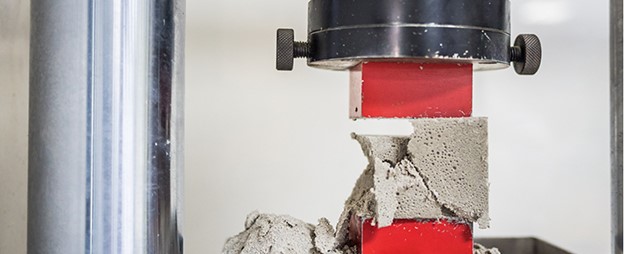
Mechanical testing is a series of standardized tests used to determine a material’s physical and mechanical properties and suitability for its proposed applications. It is a huge requirement in product design and part manufacturing due to the need to achieve standards set by organizations such as ASTM and ISO. These tests allow manufacturers to distinguish materials of less quality and choose the right material for their products.
6 Types of Mechanical Testing – Measure Material’s Strength
There are several mechanical engineering tests suitable for determining material strength parameters seen in several plastics, resin, and metal strength chart. Each has a unique approach and machine and can provide information about several strength-related parameters. Check out the common tests and what they entail.
Tensile Testing
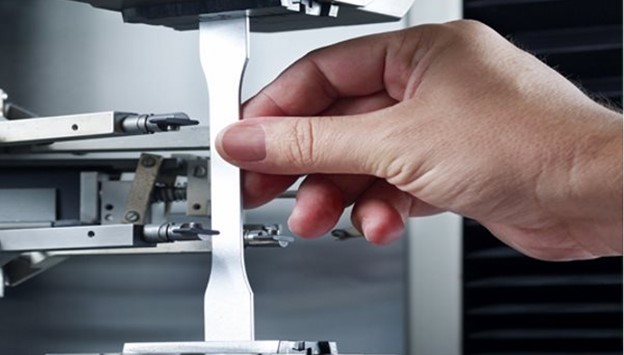
Tensile testing is a fundamental mechanical strength test used to determine material properties such as stress, strain, and yield deformation. It involves subjecting a material to a force on opposite ends and pulling till it breaks.
Testing occurs in a tensile testing machine that is either hydraulic or electric. The operator subjects the material to different forces and records the data. Afterward, they plot the data to get the stress-strain curve in a graph. Common standards for the tensile test include ASTM D638 / ISO 527-2 (for reinforced plastics), ASTM D412 / ISO 37 (vulcanized rubber and thermoplastic elastomers), and ASTM E8 / ASTM A370 / ISO 6892 (metals and other metallic materials).
Torsion Testing
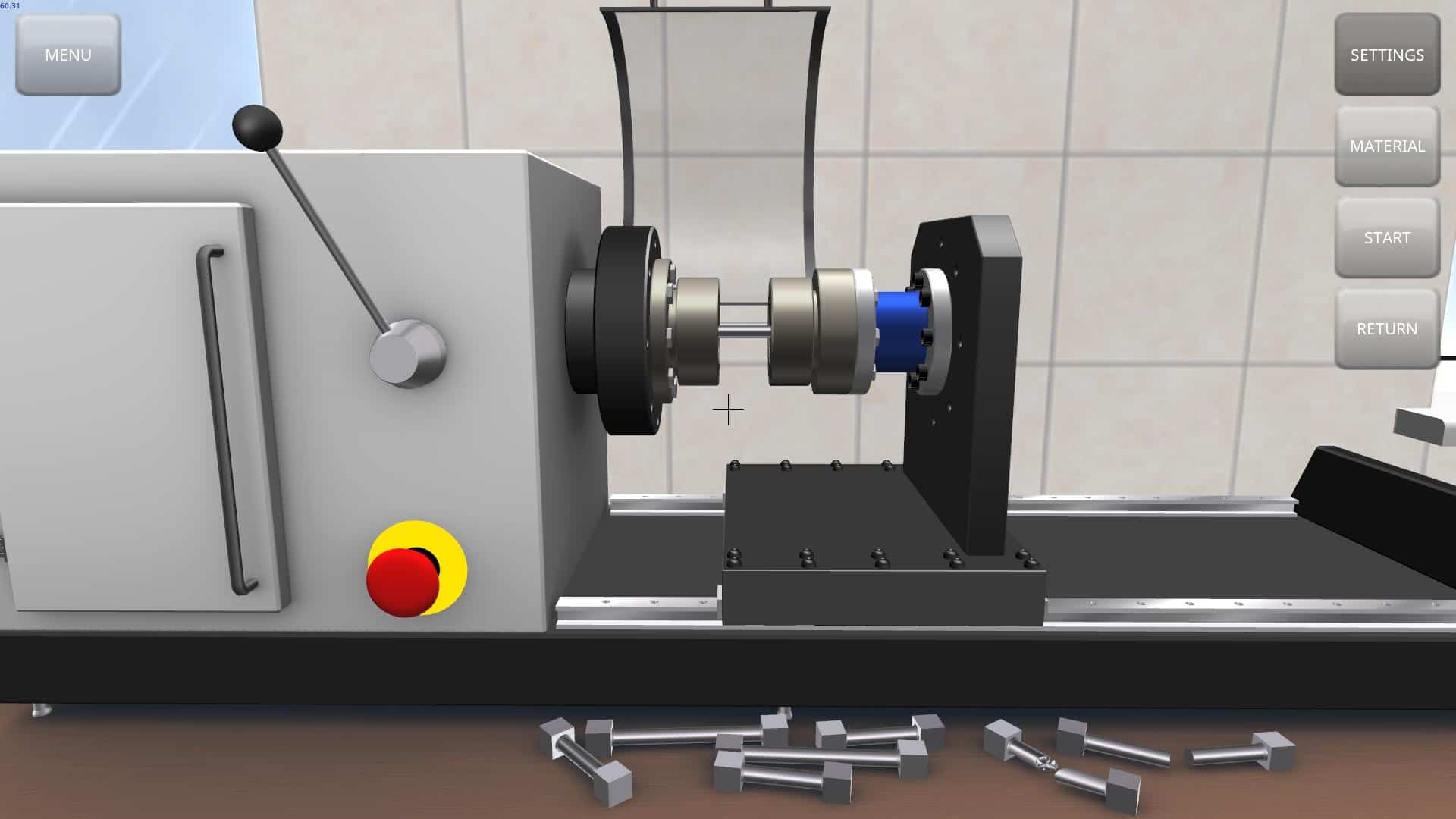
Torsion testing is another form of mechanical testing that evaluates a material’s behavior when subjected to stress at an angular displacement. As a result, it gives information about the material’s shear modulus of elasticity, shear yield strength, shear strength, shear modulus of rupture, and ductility. In contrast to tensile testing, torsion testing applies to materials and products. Furthermore, there are several types explained below.
- Torsion only: Applying only torsional load to the material
- Axial-torsion Applying axial (tension/compression) and torsional force to a material.
- Failure testing: Twisting the product or material until it breaks or there is a visible defect.
- Proof testing Applying a torsional load to the material and holding the torque for a certain time.
- Functional testing: Final testing to verify a material’s behavior under torsional forces and loads.
According to ASTM and ISO, common standards for torsional testing are ASTM A938/ ISO 7800 (Torsion Testing of Metallic Wire).
Fatigue Testing
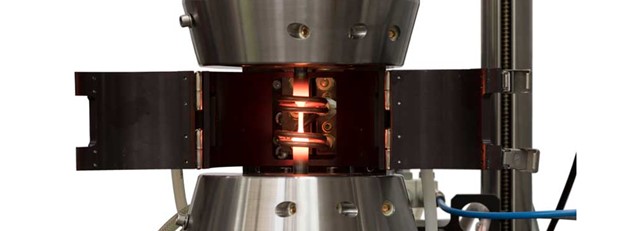
Fatigue mechanical testing determines how a material behaves under fluctuating loads applied axially, in torsion, or flexure. It involves subjecting the material to a mean load and an alternating load. As a result, the material will experience fatigue (i.e., when the material breaks).
The data will be presented from the test in an S-N diagram – a plot of the number of cycles to cause failure against the amplitude of cyclical stress (which can be stress amplitude, max stress, or min stress).
Fracture Mechanics Testing
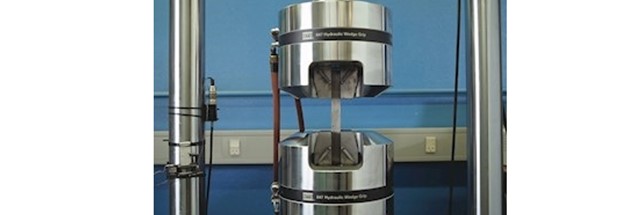
Fracture mechanics testing allows manufacturers to determine the energy it will take to break material with an existing crack into two. Furthermore, it allows the manufacturer to ascertain the material’s ability resist fracturing using the intrinsic stress factor. From the data, manufacturers can analyze the brittle fracture and examine its grain size, case depth, etc.
Common standards for the test are BS 7448, NS-EN 10225, ASTM E1820, and EEMUA pub. 158.
Compressive Testing
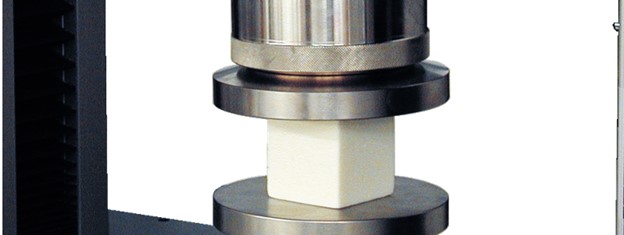
Compressive testing is another fundamental mechanical engineering test determining the material’s behavior when subjected to crushing loads. As a result, it is very important in part manufacturing because materials pass through different phases.
It is suitable for a wide variety of testing materials such as metals, plastics, ceramics, or other users in load-bearing capacity. Common standards for compressive testing are ASTM D3574 (flexible cellular materials) ASTM D695-15 (Rigid Plastics), AITM 0010, ASTM C109 (2-Inch Concrete Cubes), ISO 844 (Rigid Cellular Plastics).
Creep Testing
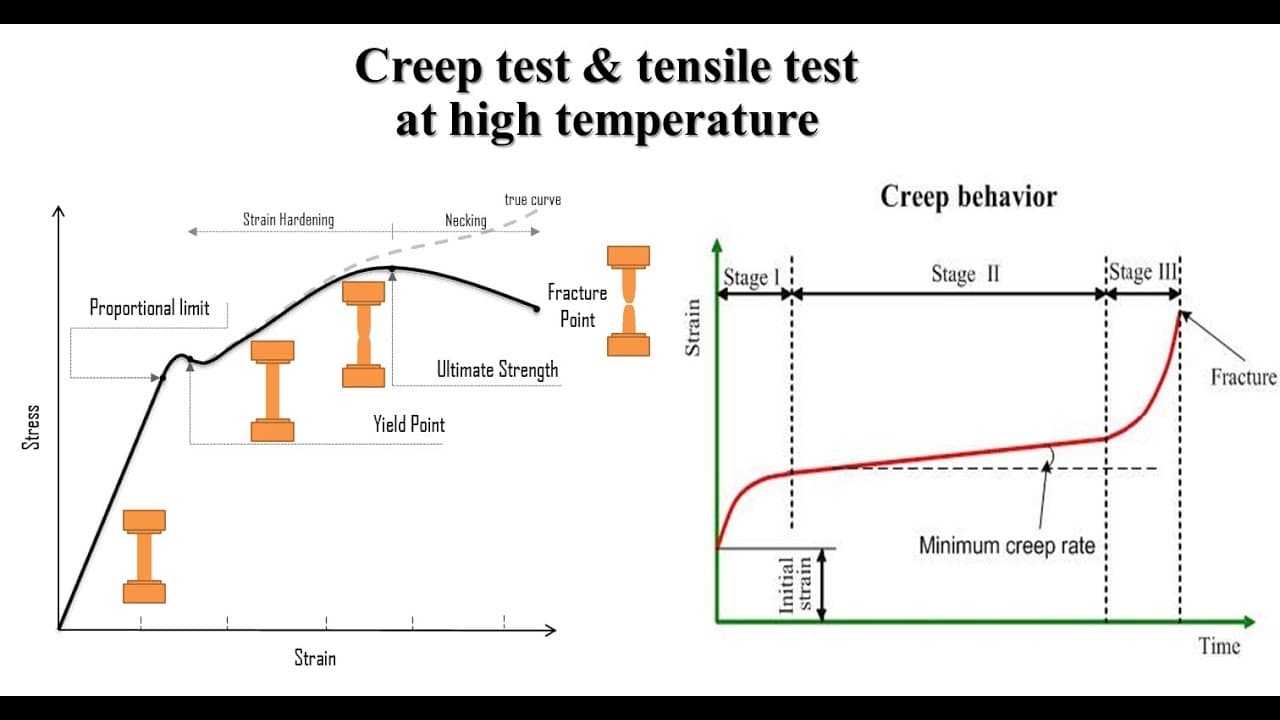
Creep testing or stress-relaxation test involves subjecting the material to constant stress at high temperatures and recording the deformation at a specific time interval. Afterward, operators plot the creep against the time on a graph to get the creep rate (slope of the graph).
This test allows manufacturers to determine a material’s tendency to deform under constant stress at constant temperatures (to incorporate thermal expansion or shrinkage). It is important for materials such as metal workings, springs, and soldered joints.
4 Tests to Measure Material’s Mechanical Properties
The different forms of mechanical testing above allow manufacturers to know a material’s strength properties. However, these tests don’t show how to measure intrinsic properties such as stiffness, hardness, and corrosion resistance. Check out four common mechanical properties testing.
Impact Testing
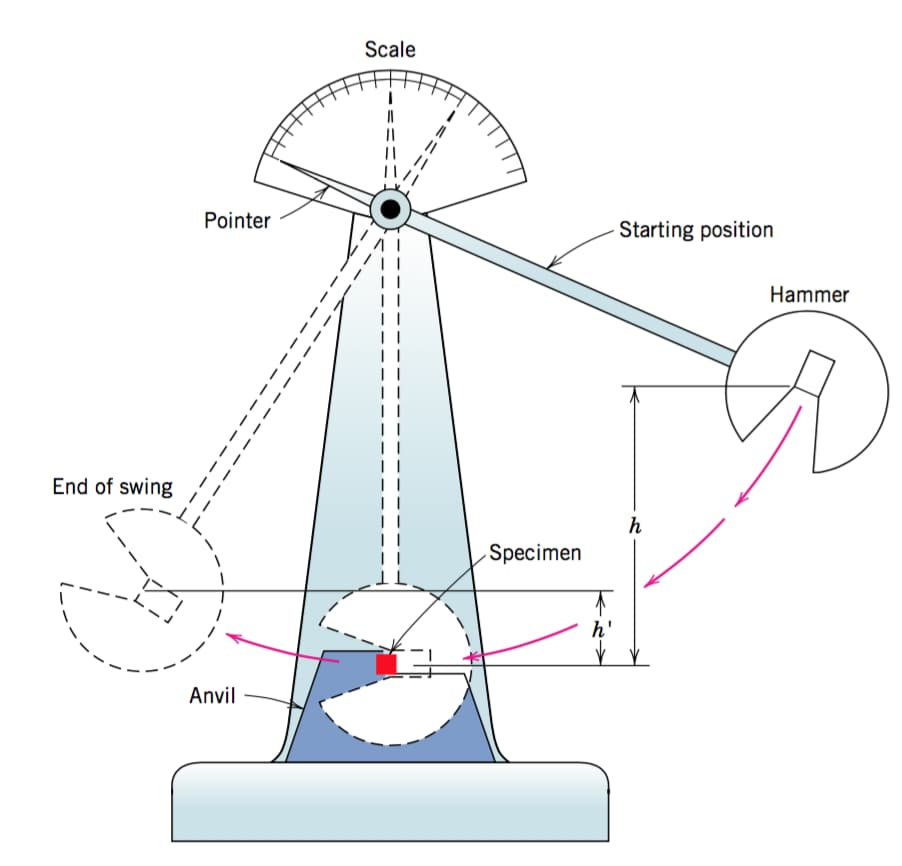
Impact testing allows manufacturers to determine the force to break material, i.e., the impact strength of metals. There are two tests: Charpy and Izod. Each involves fracturing the material, measuring the energy that caused the fracture, and getting the material’s critical crack depth.
- IZOD Impact Strength Test: Izod impact testing is an ASTM impact standard testing method that can test materials to a ¼ size. It involves using a raised pivoting arm to hit and break material. The energy taken to break the material is then calculated using the height.
- Charpy Impact Test: This standard impact test can determine the energy required to fracture a material. It involves dropping a pendulum at a known height and calculating the energy from the height.
Hardness Testing
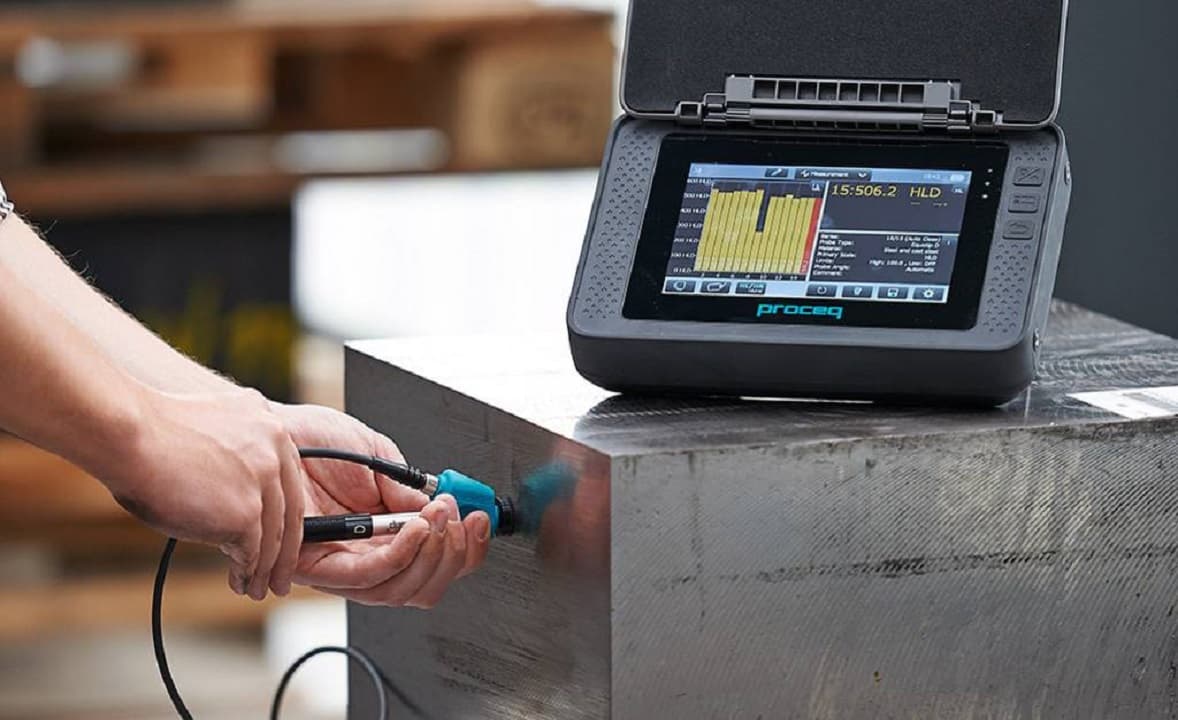
Hardness testing allows manufacturers to know the hardness of a material, i.e., the ability of the material to resist indentation. The test is conducted only on the material. Therefore, there is no need to conduct it on the finished product. There are several metal hardness tests. However, the most common are:
· Brinell Hardness Test

This is the simplest metal hardness test to conduct. It involves indenting a material by placing a steel ball on the material and then placing a load on the ball.
After a predetermined time, the operator measures the indentation caused by the steel ball and load using a calibrated graticule. They then obtain the Brinell Hardness Number (BHN) by dividing the load by the indentation surface area.
The advantages of the Brinell hardness test are that the operator doesn’t have to worry about surface roughness. Aside from that, it is suitable for bulk metal hardness measurement. However, the Brinell hardness test is unsuitable for welded joints and hard metals (over 450BHN).
· Vickers Hardness Test
Vickers metal hardness test is similar to the Brinell test. However, unlike the steel ball, it uses a diamond pyramid as an indentor. Furthermore, it is better because the indentation depth does not affect the accuracy, and the diamond indentor is non-deformable.
The operator places the indentor on the material and applies the load. Afterward, they calculate the Vickers Hardness Number (VHN) by dividing the load by the indentation surface area. Vickers Hardness test is accurate over a small diameter. As a result, it is the most suitable for welded joints.
Corrosion resistance
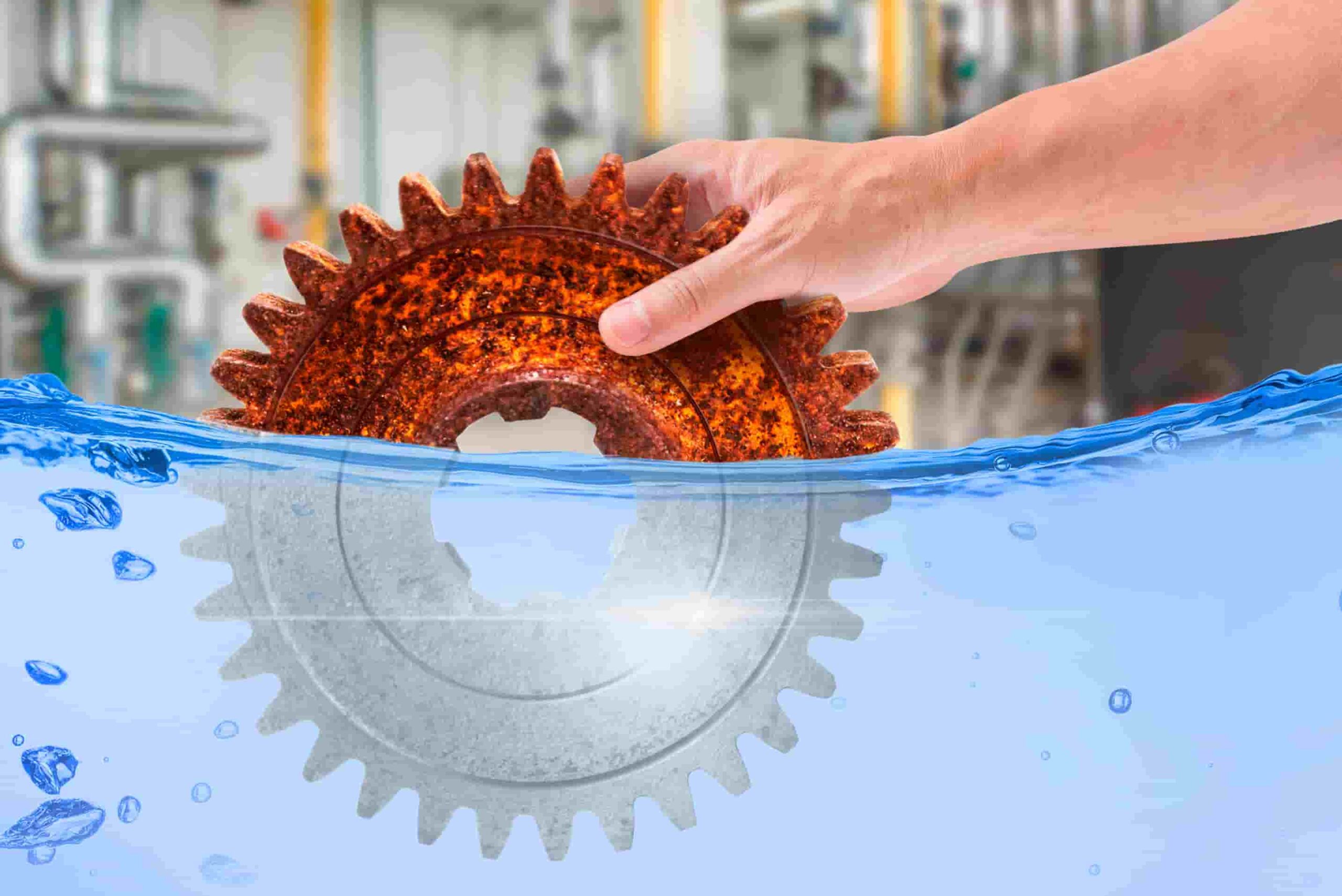
Corrosion tests are accelerated tests to determine coated and uncoated metals’ reactions in saline and non-saline conditions. There are several types of tests according to international standards. Check out the common tests.
- Salt Spray Testing: This is the standard and commonest method for checking coated and non-coated materials’ corrosion resistance. It involves spraying the materials with a saltwater solution and evaluating the appearance of the oxide.
- CASS Exposure Testing: This is an aggressive corrosion testing for aluminum alloys and chromium plating on zinc and steel materials. It involves exposing the material to Copper Accelerated Acetic Acid Salt Spray. Furthermore, the test can be functional or aesthetical, determining the exposure time (not more than 48 hours).
- Immersion Corrosion Testing: Immersion corrosion testing involves immersing a material in an aggressive, aqueous environment. Afterward, analytical methods are used to determine the loss in weight due to corrosion.
Non-destructive testing
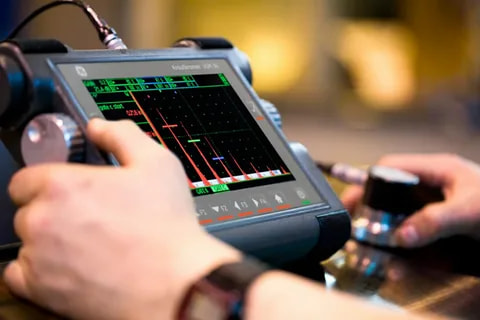
Non-destructive testing (NDT) or non-destructive examination is a set of techniques capable of evaluating a material’s property without damaging the original materials. Common NDT used in part manufacturing are:
· Acoustic Emission Testing
This passive industrial mechanical test lets you detect active cracks in a material and products. It involves passing short bursts of ultrasound through the material and products.
· Electromagnetic Testing
It involves passing an electric current or magnetic field through the material to detect the flaw, measure thickness, or identify materials.
· Leak Testing (LT)
Leak testing is a set of tests that shows the presence of cracks or any outlet that can let a product leak. It includes four major leak testing methods, bubble leak testing, pressure change testing, halogen diode testing, and mass spectrometer testing.
Is It Necessary to Invest in Mechanical Testing?
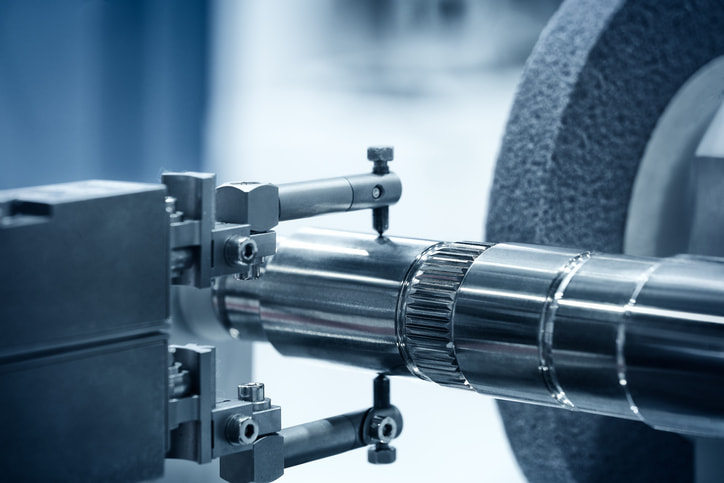
The failure to invest in mechanical tests can have consequences on a business. Therefore, investing in mechanical testing of engineering materials and products is necessary. Check some reasons why you need to value it.
· Internal Audit
An internal audit in product design and part manufacturing allows manufacturers to access the manufacturing process, materials, and products and conformance with required international standards.
An internal audit can detect whether materials used in the process passed the international standardized tests. If the materials don’t, manufacturers have to think of a solution. However, any chosen solution will consume time and resources.
· External Audit
An external audit is a procedure where an organization or an individual subjects another organization’s product to several tests. As a result, they can ascertain quality and adherence to international standards.
Materials not subjected to mechanical tests tend to produce products that fail an external audit. As a result, this can lead to wasting time and resources. Aside from that, it can also lead to a loss of trust in the products.
· Increased Costs
Using less quality material can result in wastage and a lack of authenticity in products. Aside from that, it can lead to products being over-engineered and an increase in the cost of production.
Part manufacturers can reduce or optimize production costs by using materials that adhere to international standards.
· Product Failure
This is the costliest consequence of not investing in industrial mechanical testing. Product failure can lead to product damage, life loss, and exposure to legal prosecution.
Product failure rarely occurs due to internal audits and external audits. However, there can also be an error during auditing. As a result, proper investment in the tests is necessary.
· Possibility of a Future Failure
When a product fails during testing or in-service, failure analysis can help produce the possibility of a future failure. It is similar to the popular statement “learning from the past to prevent future problems.”.
Failure analysis is an approach that uses in-depth discovery to ascertain the circumstance surrounding the product failure and uses analytical methods to inspect the failed part. As a result, manufacturers use data from failure analysis and can decide on the possible way to prevent future product failure.
Is Industrial Mechanical Testing Important?
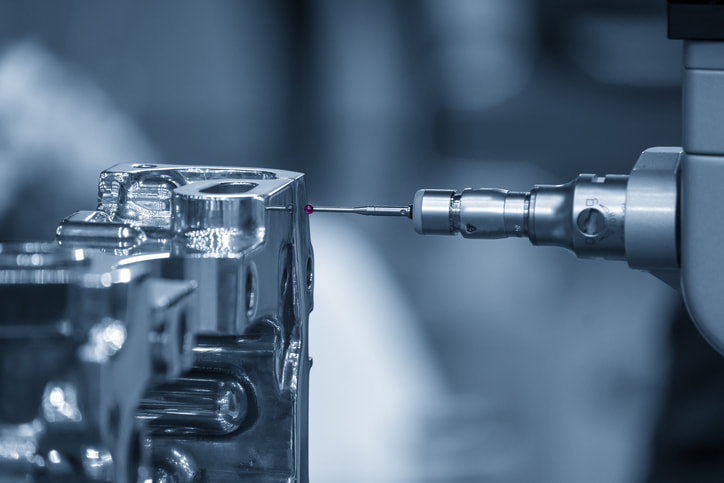
Structural integrity is an important part of part manufacturing for ensuring safety and economic feasibility. As the set of tests aims to ascertain a product’s structural integrity, it is an important part of the following:
· Manufacturers
For quality, mechanical engineering tests are important to every manufacturer. Aside from that, these tests allow manufacturers to maintain their reputation, reduce production costs, and avoid product failure.
Few manufacturing companies have the required machines for these tests. Therefore, you should ensure you outsource to one with the necessary machines.
· Material Dealers
Dealers in materials should ensure proper adherence to international standards because they are the major point of material acquisition. This gives credibility to the dealers.
· Customers/Clients
Every customer and client associated with product manufacturing should ensure that mechanical testing takes place on material and products before, during, and after production. As a result, they can improve product quality and reduce product failure.
Conclusion
Mechanical testing is a series of test methods used in analyzing products and materials to ensure safety during production, proper utilization of materials, and cost-effectiveness. It is a critical part of every design and manufacturing industry. This article introduced several mechanical engineering tests and their relevance in manufacturing.
Are you looking for a high-quality product made from tested materials? Let RapidDirect help you get started. We use advanced techniques and equipment that provide valuable insight into our material performance. As a result, we can help you make products that beam confidence and quality, and follow international standards.
FAQs
Tensile testing is the most used mechanical engineering test. The fundamental type provides manufacturers with parameters such as stress, strain, yield deformation, and other properties of materials. It is a major metal strength test suitable for polymers, composites, and fabrics.
Materials testing gives you information about the originality of the properties of a material and its application in part manufacturing. Due to the high number of materials in the market, testing helps to separate fake materials and improve selection for the intended use.


